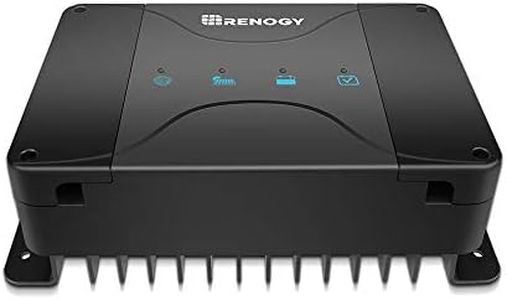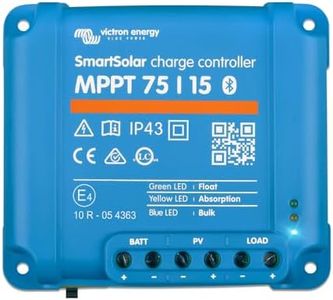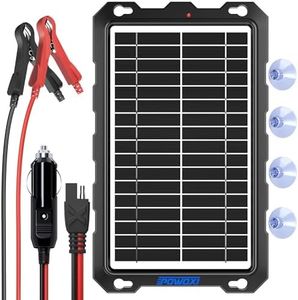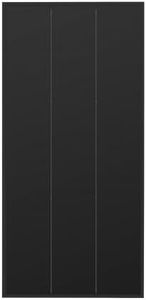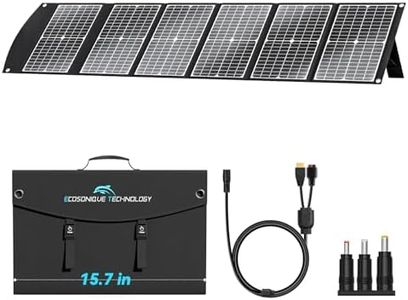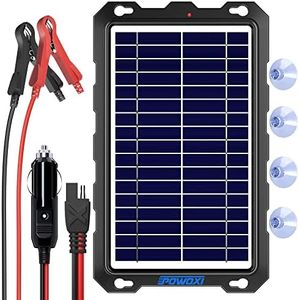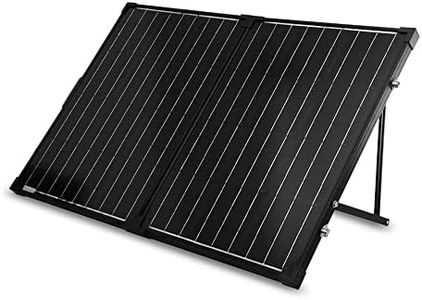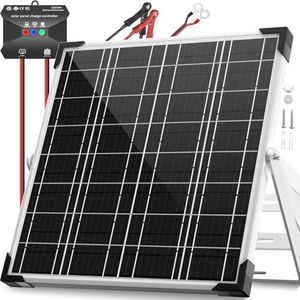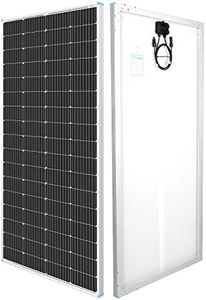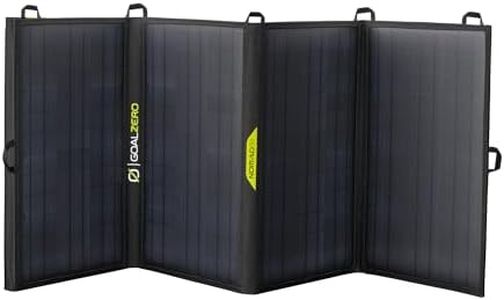We Use CookiesWe use cookies to enhance the security, performance,
functionality and for analytical and promotional activities. By continuing to browse this site you
are agreeing to our privacy policy
10 Best Rv Solar Chargers
From leading brands and best sellers available on the web.Buying Guide for the Best Rv Solar Chargers
Choosing an RV solar charger can make your travel more sustainable and convenient, letting you power your lights, devices, and appliances without relying on hook-ups or noisy generators. The best RV solar charger for you depends on your energy needs, how much space you have, and how you plan to use your RV. By understanding the key specs, you'll be better equipped to find the right balance between power, portability, and ease of use.Wattage (Power Output)Wattage tells you how much electricity the solar charger can generate under optimal conditions. This is important because it determines how quickly you can charge your RV batteries and how many devices you can run at once. Lower wattage chargers (under 100W) are suitable for keeping small batteries topped off or powering lights and small electronics, while mid-range options (100W-200W) are good for running several devices or recharging your main battery. High wattage models (200W and above) are best for running larger appliances or meeting higher energy demands. To pick the right wattage, estimate the total energy you use in a day (in watt-hours) and select a charger that can meet or slightly exceed that need.
Panel TypeRV solar chargers typically use either monocrystalline or polycrystalline panels. Monocrystalline panels are more efficient and work better in low-light conditions, making them ideal if you travel in mixed weather or want the most power from a smaller space. Polycrystalline panels are generally less expensive but take up more room for the same output and are slightly less efficient. Flexible or portable panels are available for those who want easy setup and storage, but they can be less durable than rigid panels. Think about your available roof or storage space, how much you move your RV, and the weather you'll encounter to determine the best type for your needs.
Charge Controller TypeA charge controller prevents your RV battery from being overcharged by the solar panel. There are two main types: PWM (Pulse Width Modulation) and MPPT (Maximum Power Point Tracking). PWM controllers are simpler and often cheaper, but they are less efficient at harvesting power, especially when the battery is low or the panel is in partial shade. MPPT controllers are more advanced and can deliver up to 30% more charging efficiency, which is useful if you have high power needs or limited sunlight. Choose PWM if you have simple needs and use your RV occasionally; go with MPPT if you need every bit of power or are often off-grid.
Portability and InstallationSome RV solar chargers are fixed permanently to your roof, while others are portable units you can move around as needed. Fixed systems are convenient if you use your RV often and want a set-it-and-forget-it solution, but they require installation and take up roof space. Portable systems can be set outside for the best sun exposure and stored away when not in use, making them a good fit for occasional trips or if you want to supplement another power source. Consider how frequently you travel, how much effort you want to put into setup, and whether you want to add more panels later when deciding between portable and fixed options.
Compatibility with Battery TypeNot all solar chargers work equally well with every type of RV battery, such as lead-acid, AGM, or lithium batteries. Different batteries have different charging voltages and profiles, so it's important that the controller and panel system you choose is compatible with your battery to ensure safety and efficiency. Check the specifications of both your battery and potential solar charger to make sure they're a good match. If you're planning to upgrade your battery in the future, look for RV solar chargers that are flexible or have adjustable settings for different battery chemistries.
